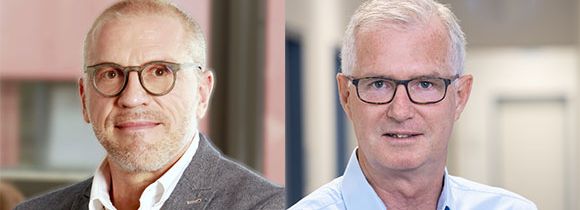english – Useful life: turning away from stereotyped thinking
No more sweeping assumptions - instead, consider contemporary asset values: Two experts speak plainly.
The experts
Dr. Robert Stein (Stein Ingenieure) is chairman of the DWA working group "Factors influencing service life in sewer rehabilitation". He is also on the board of the RAL sewer construction quality association.
Andreas Haacker (Siebert + Knipschild) is Chairman of the RSV and also a member of numerous committees (including DIN, DWA, DIBt). The chemical engineer has been involved in the quality assurance of renovation products made of plastics for 20 years.
Why is the useful life of refurbishment systems such an important issue right now?
Stein: Today, we are dealing with a new reality when it comes to assessing substance in Germany. Bridges, roads, pipes - we recognize that our infrastructure is our future and that money must flow here. In the area of sewer maintenance, we are faced with a task that urgently needs to be rethought. The existing, rigid technical nomenclatures focus on the damage that currently restricts their use. However, they do not work for a realistic assessment of the asset value in terms of long-term usability. We need to move away from this and look at the useful life of each individual project. To this end, we have set up a DWA working group to take on this task and find a way forward.
By nomenclatures do you mean repair procedures, renovation procedures and renewals, the major categories from DIN EN 15885? What is critical about this?
Stein: Nothing. My father himself was one of those who helped initiate many standards and rule sheets and we should work in accordance with standards in everything we do. However, when it comes to commercial valuation, we have to look at what alternative instruments are available for determining the useful life or net asset value. In many cases, we see blanket recommodations for asset valuations and useful lives in rules and regulations and in the literature, depending on the process group or materials. In my opinion, this can also be done differently, here is an example: Our engineering office has prepared a statement on the useful life of the repair of brick sewers by means of joint rehabilitation for the Düsseldorf urban drainage system. In this statement, we demonstrate that, taking certain aspects and quality specifications into account, this form of repair can be considered an investment with a useful life of 80 years. This is a far cry from the previous standard statements on repair procedures. The pigeonhole thinking, according to which certain useful lives are defined for entire renovation groups, is no longer appropriate.
Haacker: The same applies to cured-in-place pipes. The previous assessments are outdated and primarily theoretical, as there was little experience at the time when the Englisch market opened up for the procedures. In the meantime, the procedures have been in use for around 40 years and the long-term behavior can be assessed on the liners installed at that time. Off-cut sampling has shown that rehabilitated pipes that have been in use for decades are still in top condition today and show no significant degradation. Ageing expectations can now be made more precisely and specifically than ever before. I do not rule out the possibility that many cured-in-place pipes can achieve useful lives of 100 years or more.
100 years of useful life for cured-in-place pipes? Sounds like a bold claim...
Haacker: Not at all. In current rules and regulations such as RSV factsheet 1.1, the technical useful life is estimated to be at least 50 years. The static calculation for this is carried out on the basis of 10,000-hour tests during approval. The pipes are subjected to static loads in the laboratory for just over a year and this is then extrapolated to the next 50 years. This corresponds to only 2.3 percent of the expected useful life. We now know that cured-in-place pipes can be in service for 40 years without any significant reduction in material properties. We can therefore make increasingly reliable assumptions.
When we talk about 100 years today, it is because the durability of the materials can deliver this. The decisive factor is not only the material composition, but also the quality of production on site - in other words, how were the preliminary products turned into the end product on site? Here we see clear differences from network operator to network operator in terms of quality monitoring mechanisms. Those who do not set quality specifications and do not have the installation success checked must live with the risk of a limited useful life.
What could a new rating system look like?
Stein: We must understand the assessment of service life not as a static process, but as a dynamic one. Therefore, "estimated" mean value considerations are not sufficient for a complex and highly heterogeneous wastewater infrastructure. How value-preserving was the respective measure planned and implemented? What contamination and general conditions are present? At what intervals are serviceability assessments carried out? Instead of just making a one-off assessment of the depreciation period, we need an asset value maintenance concept that applies in the long term and enables differentiated discharge; diversion of a useful life. Only in this way can investments be used sensibly and have a sustainable effect.
